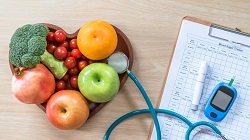Advancing theories of how pathogens spread from animals to humans
As the COVID-19 pandemic has shown, infectious diseases have the power to disrupt our very way of life. One of the main underlying mechanisms scientists are trying to understand is the spillover effect: when and how pathogens spread across the species barrier from animals to humans. This happens a lot in nature, but the rate has been increasing dramatically in recent decades. Much of the increase comes as humans encroach and disturb animal habitats around the world, such as with the expansion of agricultural areas into heavily forested and remote regions. The latest dramatic example of this is the jump of SARS-CoV-2 from an animal reservoir to humans, resulting in the devastating COVID-19 pandemic. Other examples include HIV and Ebola. “It is clear that there is a continuing risk of new emerging infectious diseases in the near future. In order to prepare for such species-jumping pathogens, it is crucial to understand the biological mechanisms driving spillover,” explains Benny Borremans, a disease ecologist at project partner the University of California in Los Angeles. That was the mission of the EU-funded SpiL project. SpiL studied an exceptional data set of the spread of Leptospira, a bacterial pathogen that causes leptospirosis, between populations of California sea lions and Channel Island foxes. “The project synthesised concepts and case studies from the literature to develop a new theory on the spillover of pathogens between ecosystems,” says Borremans, lead researcher on the SpiL project and Marie Skłodowska-Curie fellow.
Scientific advances
The first major outcome addresses a widespread problem when it comes to studying the spread of disease in a population: that it is difficult to know when exactly an individual has been infected, especially in animal populations. A promising new approach measures the decay in biomarkers of infection, such as antibodies or the presence of genetic material of the pathogen. This lets researchers back-calculate when infection occurred. “These analyses have traditionally only been done using experimental infection data, and a major advance of our work has been to enable the use of field data only,” explains Niel Hens, professor of Biostatistics at Hasselt University in Belgium and SpiL project coordinator. A new statistical analysis created by the team let them integrate different biomarkers, improving the back-calculation of infection time. “This method is a major advance in the field,” adds Hens. The work has been of immediate benefit for understanding the immune response against SARS-CoV-2, the pathogen which causes the COVID-19 disease. A rapid-response study led by Borremans was published in the journal 'eLife'. A second major outcome was the development of a new theory on spillover. The idea that the meeting of different ecosystems leads to spillover has been around for a while, but theoretical advances on the idea have been lacking. “Through the synthesis of literature, we advanced new concepts on the spillover of pathogens near ecosystem boundaries,” says Jamie Lloyd-Smith, professor of Ecology and coordinator of the project work at the University of California. The findings could be of instant use in preventing spillover effects. “We find that although there are many reasons to indeed expect higher spillover rates at ecosystem boundaries, there are also mechanisms that decrease spillover rates,” Lloyd-Smith notes.
Future research
To avoid future pandemics, and truly understand spillover, scientists will need to establish a global survey network to continuously monitor samples in wildlife and humans. “At the core of many of these efforts are quantitative modelling methods such as the ones developed in SpiL,” says Borremans.
Keywords
SpiL, disease, spillover, effect, ecology, agriculture, quantitative, modeling, SARS-CoV-2, COVID-19





